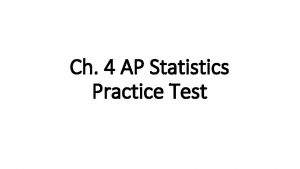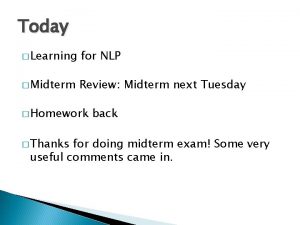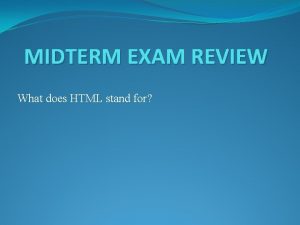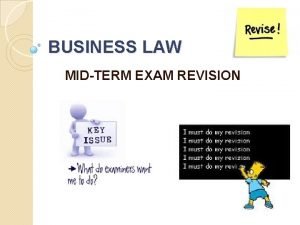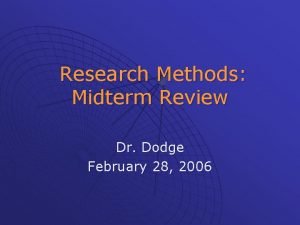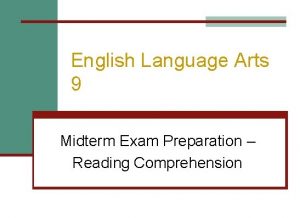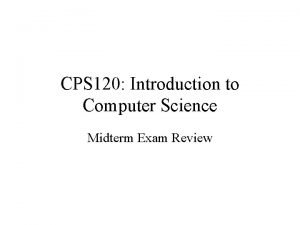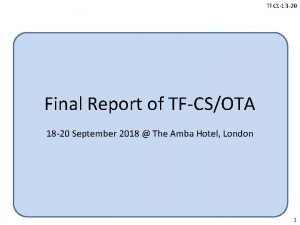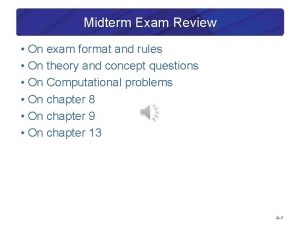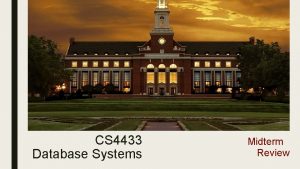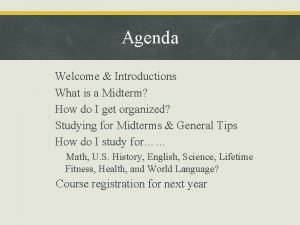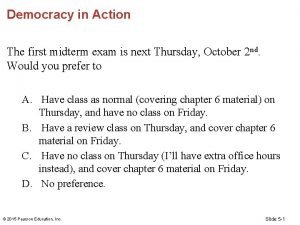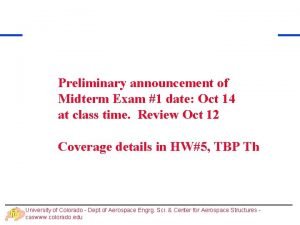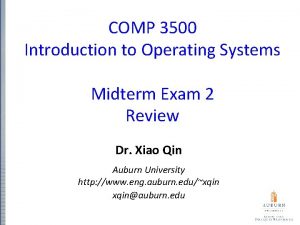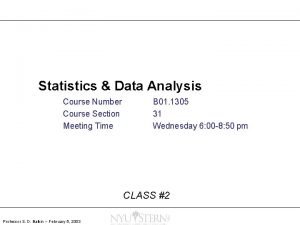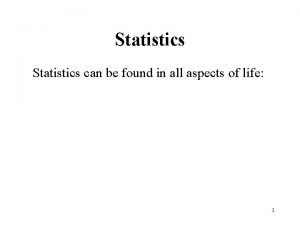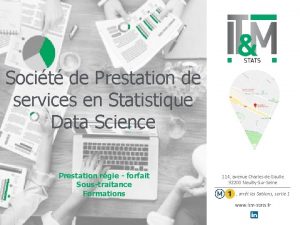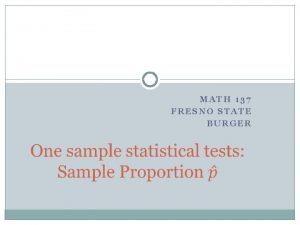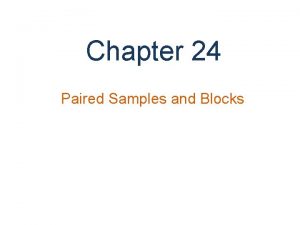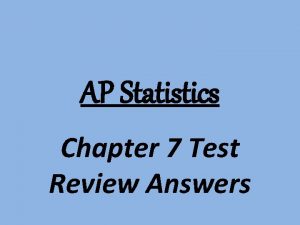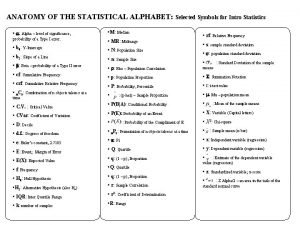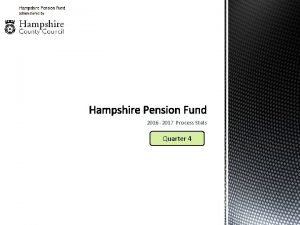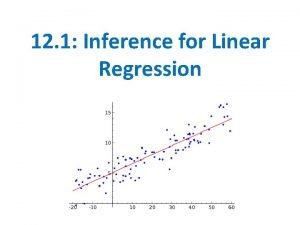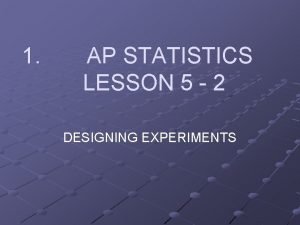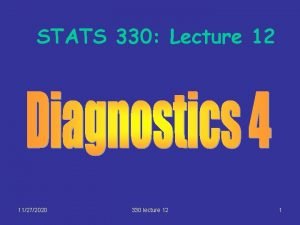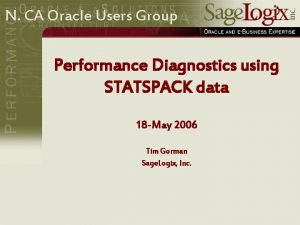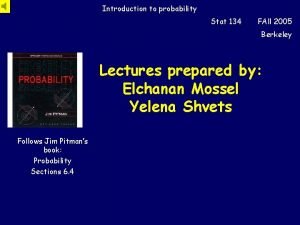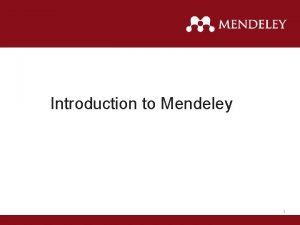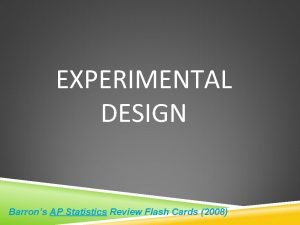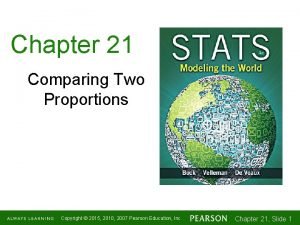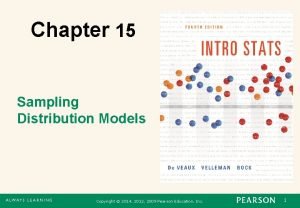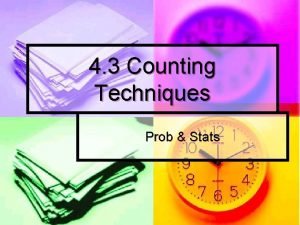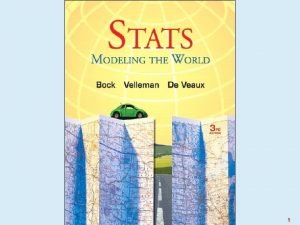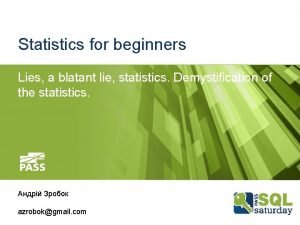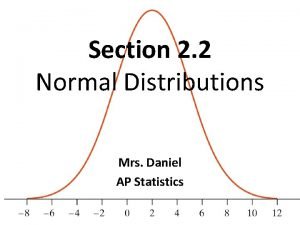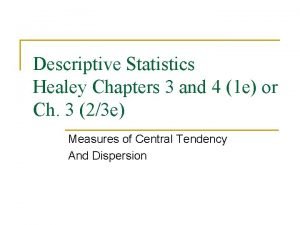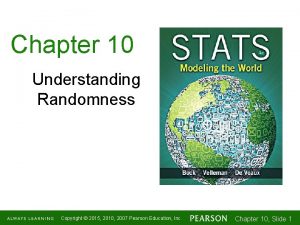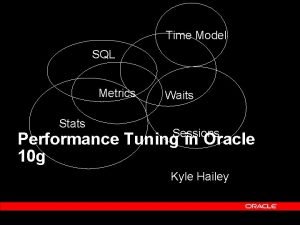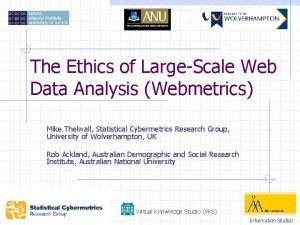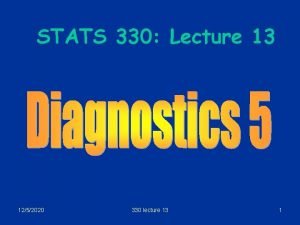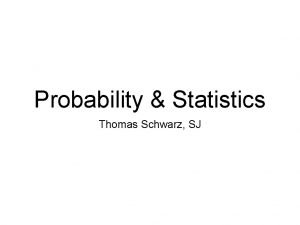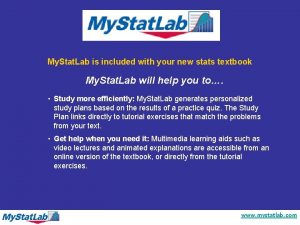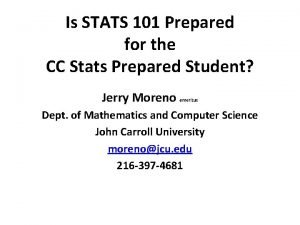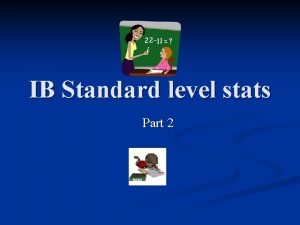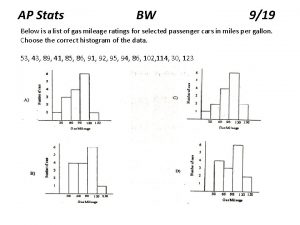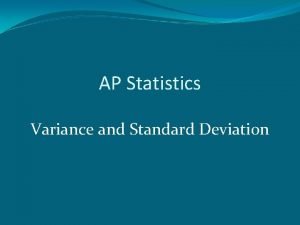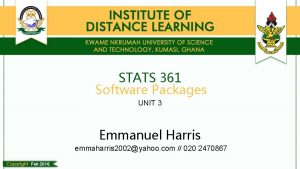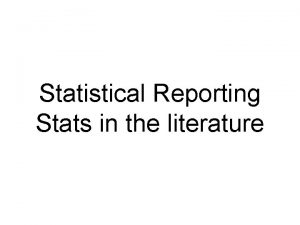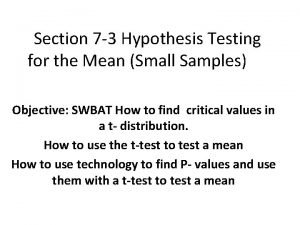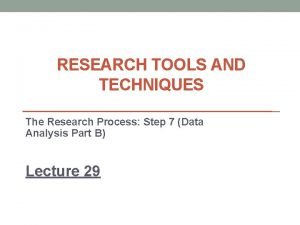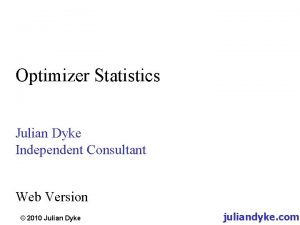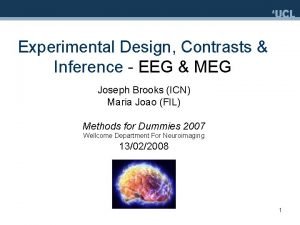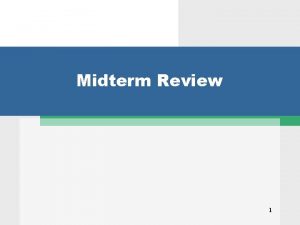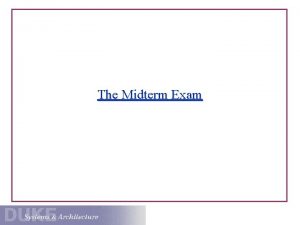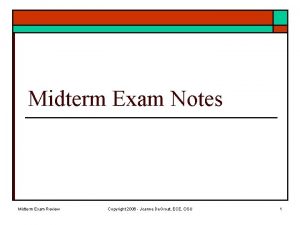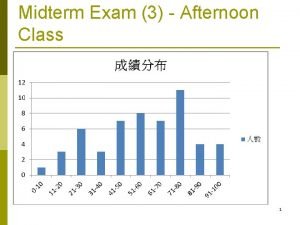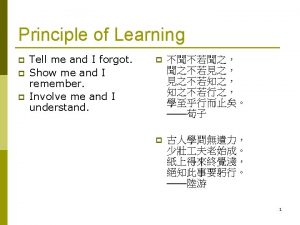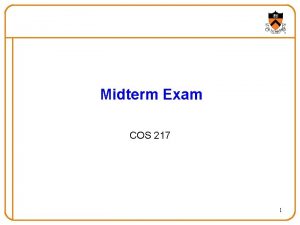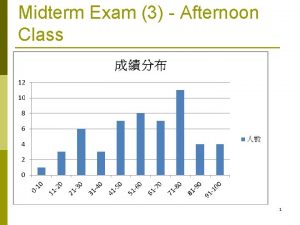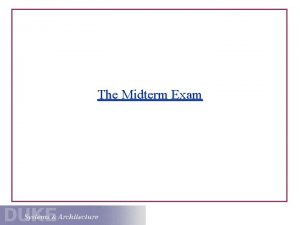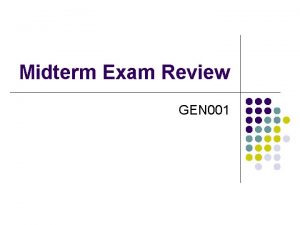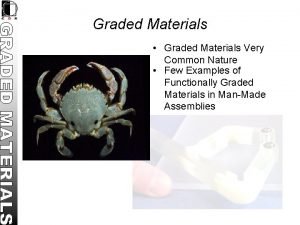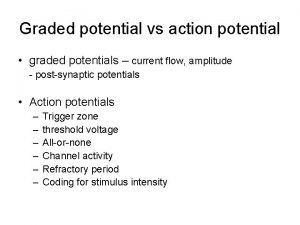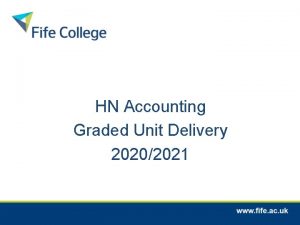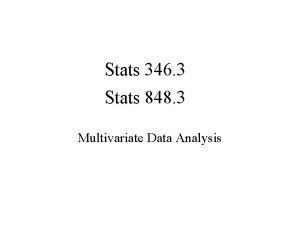Midterm Exam Stats View Your Graded Exam on



















































![(Toy) RSA Implementation in Mathematica (* Step 1. A: Find e *) GCD[phi, 7] (Toy) RSA Implementation in Mathematica (* Step 1. A: Find e *) GCD[phi, 7]](https://slidetodoc.com/presentation_image_h/76007352d95db1da47f53f3e8ab33c10/image-52.jpg)





































- Slides: 89

Midterm Exam Stats View Your Graded Exam on Gradescope (link by e-mail) • Maximum: 97 • Minimum: 61 • Mean: 75. 85 • Median: 77. 2 • Standard Deviation: 9. 1 Reminder: Homework 3 Released 1

Recap • 2

More Useful Facts • 3

More Useful Facts • 4

More Useful Facts • 5

More Useful Facts • 6

More Useful Facts • 7

More Useful Facts • 8

More Useful Facts • 9

More Useful Facts • 10

More Useful Facts • 11

More Useful Facts • 12

Groups • 13

Abelian Groups (Examples) • 14

Abelian Groups (Examples) • 15

Abelian Groups (Examples) • 16

Groups • 17

Group Exponentiation • m times 18

Group Exponentiation • 19

Group Exponentiation • 20

Group Exponentiation • 21

Group Exponentiation • 22

Chinese Remainder Theorem • 23

Chinese Remainder Theorem • 24

Cryptography CS 555 Week 10: • RSA • Attacks on Plain RSA • Discrete Log/DDH Readings: Katz and Lindell Chapter 8. 2 -8. 3, 11. 5. 1 Fall 2018 25

CS 555: Week 10: Topic 1 Finding Prime Numbers, RSA 26

RSA Key-Generation • 28

Bertrand’s Postulate • Can we do this in polynomial time? 29

Bertrand’s Postulate • 30

is. Prime(p): Miller-Rabin Test • https: //www. cse. iitk. ac. in/users/manindra/algebra/primality_v 6. pdf 31

The “Almost” Miller-Rabin Test • 32

The “Almost” Miller-Rabin Test • Need a bit of extra work to handle Carmichael numbers (see textbook). 33

Miller-Rabin Primality Test • 34

Miller-Rabin Primality Test • 35

Miller-Rabin Primality Test • 36

Miller-Rabin Primality Test • 37

Miller-Rabin Primality Test • One of the factors must be 0 (mod N) 38

Back to RSA Key-Generation • 39

Be Careful Where You Get Your “Random Bits!” • RSA Keys Generated with weak PRG • Implementation Flaw • Unfortunately Commonplace • Resulting Keys are Vulnerable • Sophisticated Attack • Coppersmith’s Method The Return of Coppersmith's Attack: Practical Factorization of Widely Used RSA Moduli (CCS 2017) 40

(Plain) RSA Encryption • 41

(Plain) RSA Decryption • 42

RSA Decryption • 43

Plain RSA (Summary) • 44

Factoring Assumption Let Gen. Modulus(1 n) be a randomized algorithm that outputs (N=pq, p, q) where p and q are n-bit primes (except with negligible probability negl(n)). Experiment FACTORA, n 1. (N=pq, p, q) Gen. Modulus(1 n) 2. Attacker A is given N as input 3. Attacker A outputs p’ > 1 and q’ > 1 4. Attacker A wins if N=p’q’. 45

Factoring Assumption • • Necessary for security of RSA. • Not known to be sufficient. 46

RSA-Assumption • 47

RSA-Assumption • • Plain RSA Encryption behaves like a one-way function • Attacker cannot invert encryption of random message 48

Discussion of RSA-Assumption • Plain RSA Encryption behaves like a one-way-function • Decryption key is a “trapdoor” which allows us to invert the OWF • RSA-Assumption OWFs exist 49

Recap • 50

Mathematica Demo https: //www. cs. purdue. edu/homes/jblocki/courses/555_Spring 17/slid es/Lecture 24 Demo. nb http: //develop. wolframcloud. com/app/ Note: Online version of mathematica available at https: //sandbox. open. wolframcloud. com (reduced functionality, but can be used to solve homework bonus problems) 51

(Toy) RSA Implementation in Mathematica (* Random Seed 123456 is not secure, but it allows us to repeat the experiment *) Seed. Random[123456] (* Step 1: Generate primes for an RSA key *) p = Random. Prime[{10^1000, 10^1050}]; q = Random. Prime[{10^1000, 10^1050}]; NN = p q; (*Symbol N is protected in mathematica *) phi = (p - 1) (q - 1); https: //www. cs. purdue. edu/homes/jblocki/courses/555_Spring 17/slides/Lecture 24 Demo. nb 52
![Toy RSA Implementation in Mathematica Step 1 A Find e GCDphi 7 (Toy) RSA Implementation in Mathematica (* Step 1. A: Find e *) GCD[phi, 7]](https://slidetodoc.com/presentation_image_h/76007352d95db1da47f53f3e8ab33c10/image-52.jpg)
(Toy) RSA Implementation in Mathematica (* Step 1. A: Find e *) GCD[phi, 7] Output: 7 (* GCD[phi, 7] is not 1, so he have to try a different value of e *) GCD[phi, 3] Output: 1 (* We can set e=3 *) e=3; https: //www. cs. purdue. edu/homes/jblocki/courses/555_Spring 17/slides/Lecture 24 Demo. nb 53

(Toy) RSA Implementation in Mathematica (* Step 1. B find d s. t. ed = 1 mod N by using the extended GCD algorithm *) (* Mathematica is clever enough to do this automatically *) Solve[e x == 1, Modulus->phi] Output: {{x->36469680590663028301700626132883867272718728905205088. . . …………………………………………………… 394069421778610209425624440980084481398131}} (* We can now set d = x *) d=364696805…. 8131; 54

(Toy) RSA Implementation in Mathematica • 55

(Toy) RSA Implementation in Mathematica • 56

RSA Implementation in Mathematica (* Encrypt a larger message, c= m^e mod N *) Seed. Random[1234567]; m 2= Random. Integer[{10^1500, 10^1501}]; c=Power. Mod[m 2, e, NN] Output: 405215834903772786……… 388068292685976133 (* Does it Decrypt Properly? *) Power. Mod[c, d, NN]-m 2 Output: 0 (* Yes! *) 57

CS 555: Week 10: Topic 2 Attacks on Plain RSA 58

(Plain) RSA Discussion • We have not introduced security models like CPA-Security or CCAsecurity for Public Key Cryptosystems • However, notice that (Plain) RSA Encryption is stateless and deterministic. Plain RSA is not secure against chosen-plaintext attacks • As we will see Plain RSA is also highly vulnerable to chosen-ciphertext attacks 59

(Plain) RSA Discussion • 60

Chosen Ciphertext Attack on Plain RSA • 61

More Weaknesses: Plain RSA with small e • 62

More Weaknesses: Plain RSA with small e • D. Coppersmith (1996). "Finding a Small Root of a Univariate Modular Equation". 63

More Weaknesses: Plain RSA with small e • D. Coppersmith (1996). "Finding a Small Root of a Bivariate Integer Equation; Factoring with high bits known" 64

The Return of Coppersmith's Attack: Practical Factorization of Widely Used RSA Moduli (CCS 2017) 65

Fixes for Plain RSA • Approach 1: RSA-OAEP • Incorporates random nonce r • CCA-Secure (in random oracle model) • Approach 2: Use RSA to exchange symmetric key for Authenticated Encryption scheme (e. g. , AES) • Key Encapsulation Mechanism (KEM) • More details in future lectures…stay tuned! • For now we will focus on attacks on Plain RSA 68

Chinese Remainder Theorem • 69

Chinese Remainder Theorem • 70

A Side Channel Attack on RSA with CRT • 71

Recovering Encrypted Message faster than Brute-Force • 72

Recovering Encrypted Message faster than Brute-Force • 73

Recovering Encrypted Message faster than Brute-Force • 74

Recovering Encrypted Message faster than Brute-Force • 75

CS 555: Week 10: Topic 3 Discrete Log + DDH Assumption 76

(Recap) Finite Groups • 77

Finite Abelian Groups (Examples) • 78

Cyclic Group • 79

Finite Abelian Groups (Examples) • 80

Discrete Log Experiment DLog. A, G(n) • 81

Diffie-Hellman Problems • 82

Secure key-agreement with DDH • 83

Can we find a cyclic group where DDH holds? • 84

Can we find a cyclic group where DDH holds? • 85

Can we find a cyclic group where DDH holds? • 86

Can we find a cyclic group where DDH holds? • 87

Elliptic Curve Example (x 3, y 3) • 88

Elliptic Curve Example (x 3, y 3) • 89

90

Elliptic Curve Example No third point R on the elliptic curve. P+Q = 0 (Inverse) 91

Can we find a cyclic group where DDH holds? • 92
 When we take a census we attempt to collect data from
When we take a census we attempt to collect data from Nlp midterm exam
Nlp midterm exam Data mining midterm exam with solutions
Data mining midterm exam with solutions Html midterm exam
Html midterm exam English 1 midterm
English 1 midterm Business law midterm
Business law midterm Research methods midterm
Research methods midterm English 9 midterm exam
English 9 midterm exam Introduction to computer science midterm exam
Introduction to computer science midterm exam Introduction to computer science midterm exam test
Introduction to computer science midterm exam test Ap english language and composition midterm exam
Ap english language and composition midterm exam Algebra 2 midterm review answers
Algebra 2 midterm review answers Grva midterm exam
Grva midterm exam Midterm exam format
Midterm exam format American literature midterm exam
American literature midterm exam World history semester 1 final exam
World history semester 1 final exam English 11 midterm exam
English 11 midterm exam Database systems midterm exam
Database systems midterm exam Apes midterm exam
Apes midterm exam Whats a midterm exam
Whats a midterm exam Geometry midterm exam review
Geometry midterm exam review Exam midterm
Exam midterm Ap chemistry midterm exam
Ap chemistry midterm exam Algebra 1 midterm exam
Algebra 1 midterm exam Midterm exam announcement
Midterm exam announcement Web development midterm exam
Web development midterm exam Operating system midterm exam
Operating system midterm exam Midterm exam (modules 1 - 9)
Midterm exam (modules 1 - 9) Give us your hungry your tired your poor
Give us your hungry your tired your poor Statistics complement rule
Statistics complement rule What is statistics
What is statistics Wait stats in sql server
Wait stats in sql server It&m stats
It&m stats Vampires prey on panama extreme language
Vampires prey on panama extreme language Stats p hat
Stats p hat What is modality in statistics
What is modality in statistics Ap stats chapter 24 paired samples and blocks
Ap stats chapter 24 paired samples and blocks Ap statistics chapter 7 and 8 test answers
Ap statistics chapter 7 and 8 test answers Statistics symbols
Statistics symbols Mrs daniels ap stats
Mrs daniels ap stats Jared derksen
Jared derksen Stats refund
Stats refund Name of test
Name of test What are experimental units in stats
What are experimental units in stats Stats 330
Stats 330 Riak cs stats
Riak cs stats Examples of parameter
Examples of parameter Questioning stance
Questioning stance Stats$sql_summary
Stats$sql_summary Mobile commerce stats
Mobile commerce stats Stat 134
Stat 134 Mendeley stats
Mendeley stats Stats general addition rule
Stats general addition rule A candy manufacturer wants to test consistency
A candy manufacturer wants to test consistency Does the moon rotate
Does the moon rotate Stats canada
Stats canada Chapter 21 comparing two proportions
Chapter 21 comparing two proportions Ap stats chapter 17 sampling distribution models
Ap stats chapter 17 sampling distribution models Ap statistics chapter 6
Ap statistics chapter 6 Ap stats chapter 16
Ap stats chapter 16 Stats tree diagram
Stats tree diagram Ap stats chapter 17 sampling distribution models
Ap stats chapter 17 sampling distribution models Numbers and stats signpost examples
Numbers and stats signpost examples Statistics for beginners
Statistics for beginners Mrs daniel ap stats
Mrs daniel ap stats Iqv stats calculator
Iqv stats calculator Ogive in statistics examples
Ogive in statistics examples Ap stats chapter 10 understanding randomness
Ap stats chapter 10 understanding randomness Ap stats chapter 14
Ap stats chapter 14 Stats
Stats Webmetrics integration
Webmetrics integration Stats 330
Stats 330 Statsmodels.stats.weightstats.ztest
Statsmodels.stats.weightstats.ztest My stats lab
My stats lab Stats
Stats In cc stats
In cc stats Combined standard deviation formula
Combined standard deviation formula Hurricane florence stats
Hurricane florence stats Stats
Stats Ap stats
Ap stats Statistics variance
Statistics variance Statistical tests psychology
Statistical tests psychology Questioning stance
Questioning stance Notice and note nonfiction
Notice and note nonfiction Stats 361
Stats 361 Stats
Stats Hypothesis test
Hypothesis test Stats table psychology
Stats table psychology Dbms_stats.copy_table_stats
Dbms_stats.copy_table_stats Meg joseph
Meg joseph
